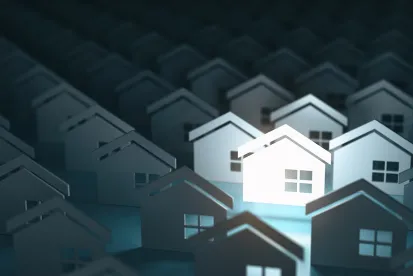On September 28, 2021, Governor Newsom signed SB 290, which amends certain provisions of the Density Bonus Law (Gov. Code § 65915). Senator Skinner’s SB 290 essentially replicates SB 1085 from 2020, which died, along with several other housing bills, on the Assembly Floor on the final night of the legislative session. In addition to some minor restructuring of Government Code section 65915, SB 290 provides the following clarifications and revisions to the Density Bonus Law (DBL):
-
Clarifies Rental/For Sale. The DBL has been understood by practitioners to apply to both rental and for-sale housing developments, but SB 290 expressly states so. With regard to the latter, the bill also replaces references to “common interest development” with broader references to developments in which the units are for sale, thereby applying the DBL to for sale projects that may not meet the definition of “common interest development” in Civil Code section 4100. Equity sharing agreements are still required when units are sold to qualifying households.
-
Student Housing Incentive. Senator Skinner’s SB 1227 (2018) helped lower-income students by providing density bonuses to student housing projects that provide at least 20% of the total units to lower-income students. That legislation, however, was unable to provide proposed student housing projects with a DBL “incentive” that provides greater flexibility and protection to such projects during the entitlement process. SB 290 rectifies this by expressly providing one incentive for student housing projects that include at least 20% of the total units for lower-income students.
-
Reconciles HAA Text. One of the limited bases upon which a local agency may deny a requested incentive or development standard waiver is to find that the incentive or waiver would create a specific, adverse impact on the “health, safety, or physical environment.” The DBL expressly refers to the Housing Accountability Act (Gov. Code § 65589.5) for the definition of a “specific, adverse impact,” but that statute only refers to impacts to public health or safety, and not to the physical environment. By removing “physical environment” from consideration of a DBL project’s incentives or waivers, SB 290 harmonizes the “specific, adverse impact” criteria for the DBL with the Housing Accountability Act.
-
Total Units Defined. Density bonuses and incentives are based on setting aside certain percentages of a project’s “total units” as affordable units. The former version of the DBL provided that “total units” did not include the units added by a density bonus award. SB 290 replaces that explanation with one that confirms that “total units” excludes any density bonus units, while also including an express statement that any unit needed to satisfy a local agency’s inclusionary zoning requirement is included. Thus, a local agency must count the inclusionary units when calculating the density bonus threshold, which codifies a holding in the Latinos Unidos case from 2013.
-
Moderate Income Parking Reduction. The DBL’s reduced parking ratios are often critical to infill multifamily projects. For projects that provide at least 20% lower-income units or at least 11% very-low-income units, and are located within one-half mile of a major transit stop, the DBL prohibits a local agency from imposing a parking ratio that exceeds 0.5 spaces per unit. SB 290 expands this protection to projects that provide at least 40% moderate-income units and are also within one-half mile of a major transit stop, except that the 0.5 spaces metric is per bedroom, and not per unit.
PRACTICAL CONSIDERATIONS
The DBL continues to receive attention and updates in Sacramento, as it has proven to be an effective tool for developers and local agencies as they seek to chip away at California’s affordable housing crisis. The revisions in SB 290 may seem relatively minor, but should open doors for student-focused projects and moderate-income deals where parking was an issue. This year’s update also includes another statement from the Legislature about the intent of the DBL – “to cover at least some of the financing gap of affordable housing with regulatory incentives, rather than additional public subsidy.” Developers with questions about the impact of the DBL on their projects are encouraged to seek legal counsel.




 />i
/>i

